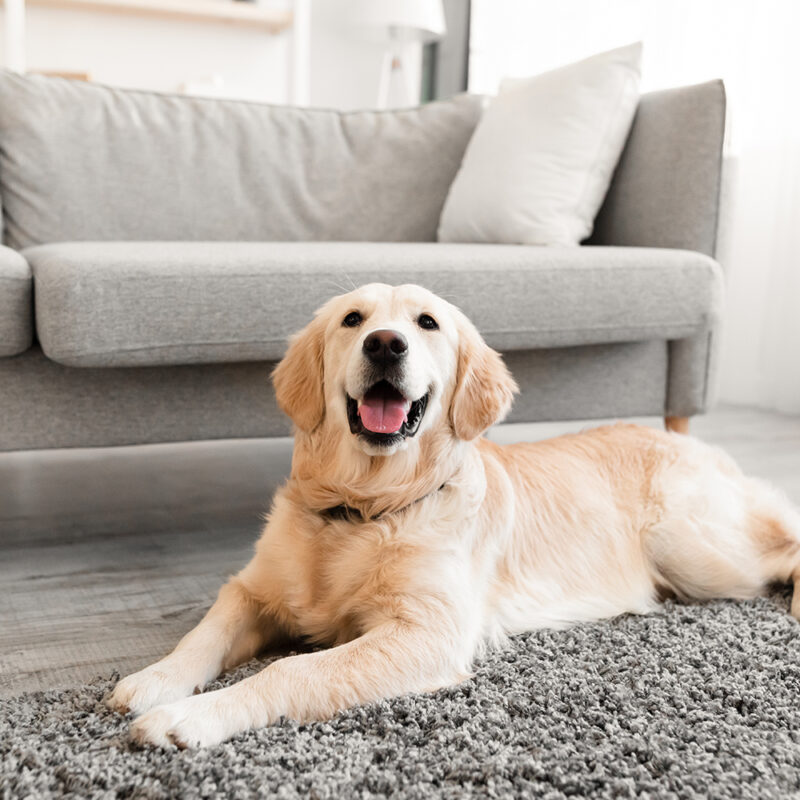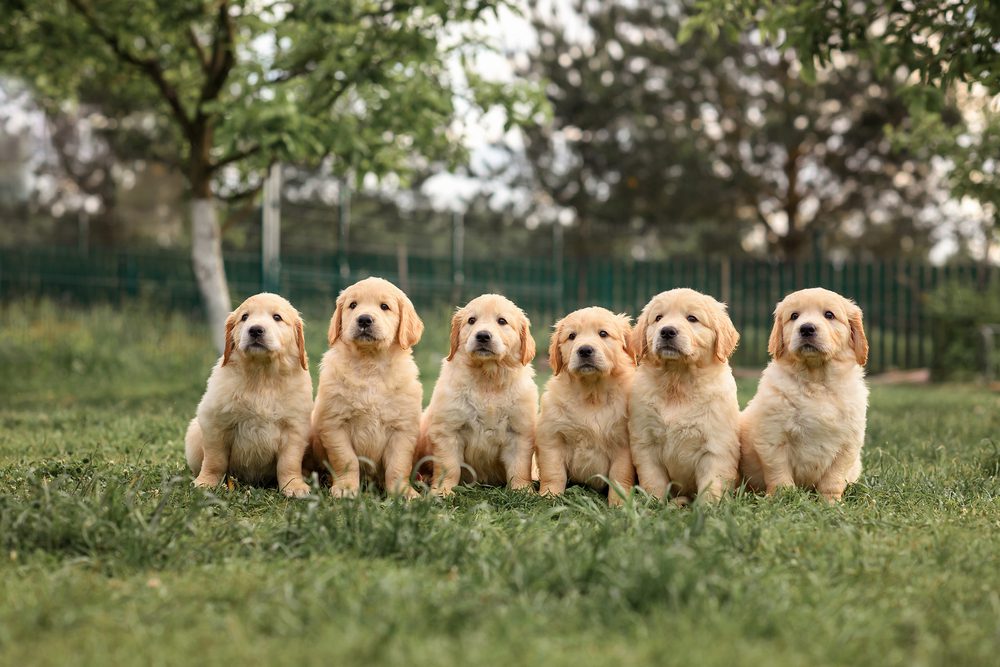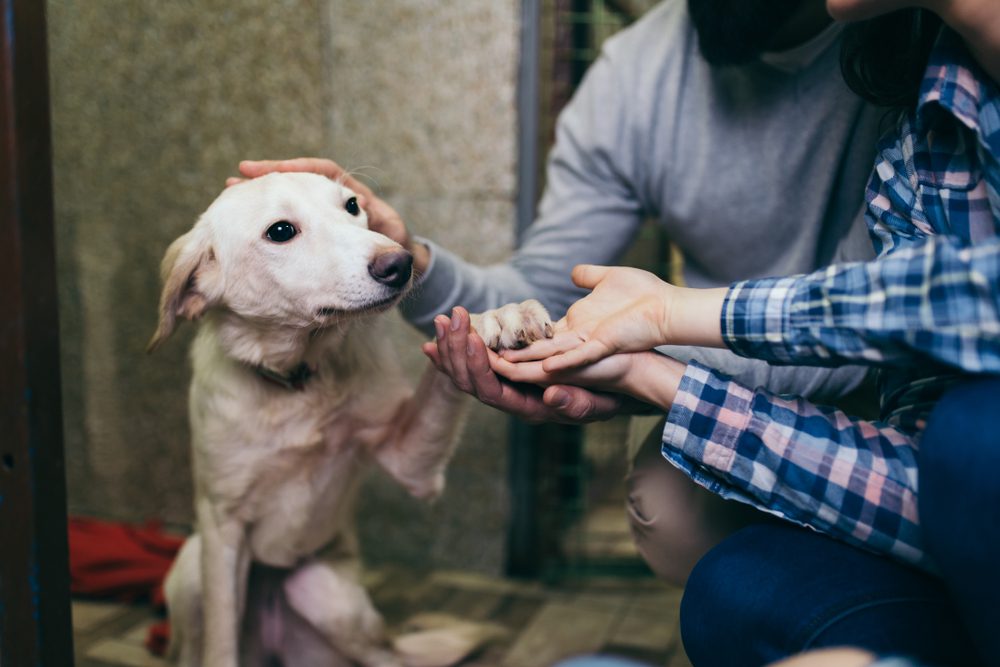Labrador Retriever
Breed Stats
Adopting a Labrador Retriever: An Overview
The Labrador Retriever has been one of the most popular breeds in the United States for over three decades. Once you meet this lovable pup in person, you’ll soon realize why: They’re affectionate, playful, patient, and eager to please — all traits that make them a fantastic family pet!
If your heart is set on this breed, then one of the first things to consider is whether you wish to buy a puppy from a breeder or adopt a Labrador retriever from a rescue organization. Purchasing from a breeder will allow you to have a better understanding of your Lab’s lineage and experience their very first moments. However, puppies can be extremely pricey, and Lab breeders often have long waiting lists.

Adopting a Labrador retriever, in contrast, is a lot more affordable and can be a great alternative. Most rescues and shelters set their adoption fee between $50 and $250 and cover initial veterinary expenses like vaccinations and health checks. Adopting also means you’ll be giving a Lab in need the second chance at life they deserve.
Labrador retrievers are relatively easy to find in shelters, but this is at no fault of their own. Many misinformed pet owners, unfortunately,y adopt them without realizing the full extent of their needs. With the right family and support, any Lab rescue is sure to make a loving companion.
To ensure you’re fully prepared, we’ll discuss everything you need to consider when adopting a Labrador retriever below, including how to care for them.
For Even More Information on Labrador Retrievers
View Breed InfoLabrador Retrievers For Adoption
How to Care for an Adopted Labrador Retriever?
Welcoming your adopted Labrador retriever home for the first time is no doubt an exciting moment, but it’s important not to overwhelm them and go at a pace they’re comfortable with. Keep noise at a minimum, ensure your kids interact with them gently, and provide them with a safe, comforting place in the home where they can relax, such as a crate with soft blankets and toys.
As ‘people dogs’ at heart, Labs can be prone to separation anxiety, so it’s important not to leave them alone for long periods at a time. This is especially the case when they’re still getting accustomed to your lifestyle and the home environment.


Training a Labrador Retriever
Once your adopted Labrador retriever has settled in, you can begin to look at socialization and training. Fortunately, the Lab is an exceptionally smart, work-driven dog who loves to please their owner, so you can typically expect them to pick up commands effortlessly with the right guidance.
Use reward-based training measures, also known as positive reinforcement, to set your Labrador retriever up for success and to strengthen the trust between you both. Reward-based measures put the focus on your dog’s good behaviors rather than their mistakes, which helps to motivate them and build their confidence in the long term.
Rewards can be in the form of praise, treats, toys, or anything else your pup loves. Labs are often highly motivated by food, so treats are a good option to try first while you’re still learning your adopted Lab’s likes and dislikes.
Start with basic obedience and gradually move on to more advanced commands. Keep in mind that your training goals will ultimately depend on your rescue Lab’s needs and history. Some rescue dogs arrive at the shelter well-trained and socialized, while others may have been neglected by their previous owners and require extra support with essentials like housebreaking.
Exercise Needs
The Labrador retriever is an extremely active pup thanks to their working dog lineage. As a responsible dog owner, you’ll need to ensure you provide them with plenty of outlets for their energy throughout the day.
Aim to exercise your Lab for at least two hours each day, which can be in the form of walks, hikes, runs, dog sports like agility, and interactive play. Many Labs also enjoy the water and will love to swim and happily partake in water games — just make sure to clean their ears after they swim to prevent infections.
Remember that every dog’s exercise routine should be tailored to their unique needs. For instance, a senior Labrador retriever will typically be more laid-back and require a lot less exercise throughout the day than a young Lab.
Grooming Needs
Besides regular ear cleaning, you should also make sure to brush your Labrador retriever’s thick double coat at least once or twice a week, or daily during periods of heavy shedding. Use a rake brush to tackle particularly stubborn mats and trapped undercoat fur, and smooth over the top coat with a bristle brush. Make sure to brush in the direction your Lab’s fur naturally grows to avoid causing discomfort.
You should also wash your adopted Lab every month, brush their teeth daily to prevent dental disease, and trim their nails if they grow too long.
Feeding Your Labrador Retriever
Most rescue organizations will advise you on your adopted Labrador retriever’s dietary needs before you take them home. In general, your Lab should be fed high-quality dog food that’s formulated specifically for their age, size, and activity level, and will need to eat between 2 and 3.5 cups of food each day. Their daily calorie intake should be split across two to three meals.
A high protein content can be particularly beneficial, as it will help your Lab maintain lean muscle mass and give them the energy they need to play and thrive.
Dog-Proofing Your Home
“Dog-proofing” your home doesn’t just mean stocking up on essential supplies and setting up your Lab’s bedding; it also means taking measures to ensure their living environment is safe, secure, and free of potential hazards (like chewable cables).
Dog-proofing your home is important for any pup, though it’s especially important if you’re considering adopting a Labrador retriever. The breed’s strong retrieving instincts mean they love to explore the world with their mouth and will often chomp and chew on anything they can find.
Here are a few key things to consider when dog-proofing your home and yard:
- Tidy away cables, remove choking hazards, and keep floors clear of debris
- Invest in a dog-proof trash can and keep counters free of food
- Keep cleaning products and other hazardous chemicals out of your Lab’s reach
- Unplug electrical cords when not in use (or when you leave the room)
- Ensure window and door latches are in working order and are kept secure
- Remove poisonous plants from both inside the home and outdoors
- Make sure that there are no gaps in the yard fence
- Ensure your adopted Lab always has access to clean, fresh water throughout the day
Is It a Good Idea to Adopt a Labrador Retriever As Your First Dog?

The Labrador retriever can make a wonderful first-time dog, especially for families. They are affectionate, gentle, and loyal, and they get along well with kids of all ages.
They’re also one of the easiest breeds to train thanks to their intelligence and work-driven nature. With reward-based training, the Labrador retriever can master both basic obedience and advanced commands. They’ll see every training session as a fun pastime and an opportunity to strengthen their bond with you.
The Labrador retriever has fairly manageable care needs, though they do need a lot of exercise and mental stimulation throughout the day to feel happy and satisfied. With this in mind, the breed is best suited to people who lead active lifestyles and are willing to allocate plenty of time to playing with them daily.
The Lab can also thrive as a service animal, therapy dog, and emotional support animal, so they can be a particularly good first-time companion for those seeking therapeutic relief from a disability.


Adopt the Right Labrador Retriever for You
Labrador retrievers are loyal, family-oriented dogs who have plenty of love to give to those who can properly meet their needs.
Adopting a Labrador retriever is a wonderful journey, but it’s important not to rush the process. You should take the time to reflect on the kinds of qualities you’re hoping to find in a companion, and also what your lifestyle and living arrangements allow for.
Once you have an understanding of this, you can then speak to shelters and rescue organizations to learn more about their typical adoption procedures and policies, as well as whether they have any Labrador retrievers available for adoption.
If there are Labs available, you can then arrange to meet them in person to learn more about their personalities and care needs. Try to meet each Lab as many times as possible. While the breed does have some predictable traits, every pup is still unique in its own way. Some Labrador retrievers, for instance, will be more reserved than others.
When you feel you’ve found the right match, you can speak to the shelter or rescue staff for the next steps. This will typically involve filling in paperwork and paying a small adoption fee.









